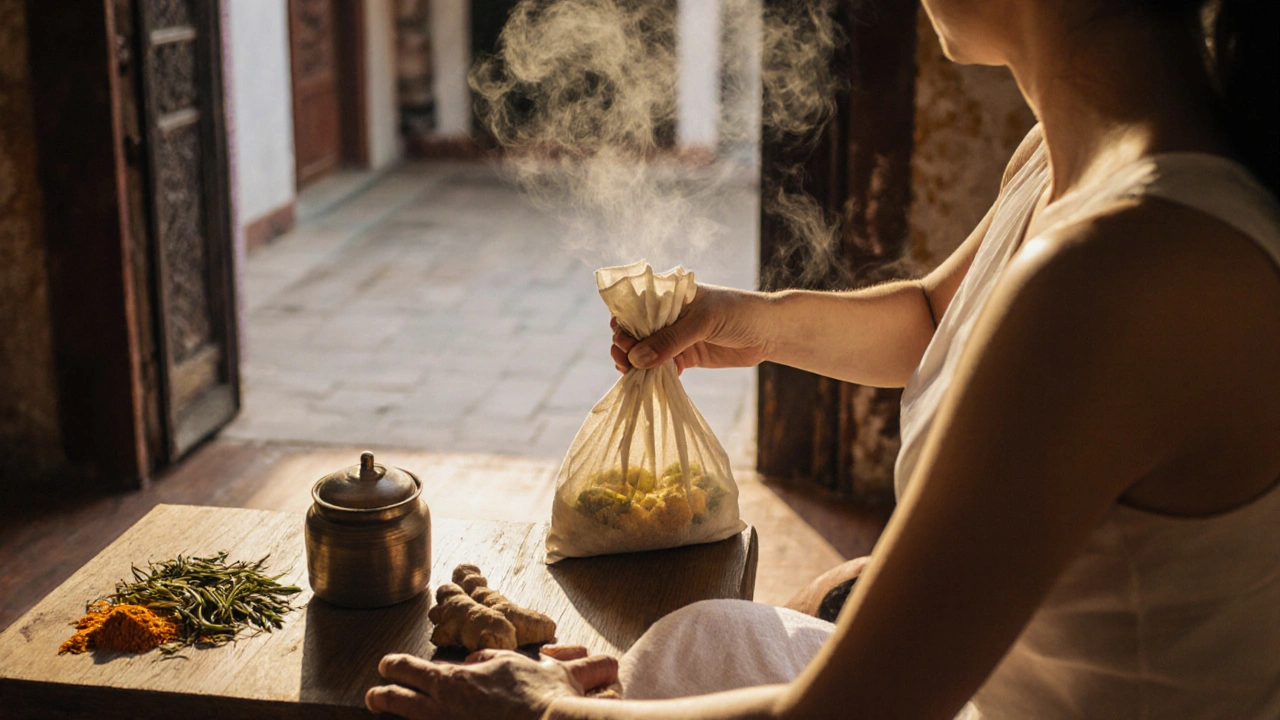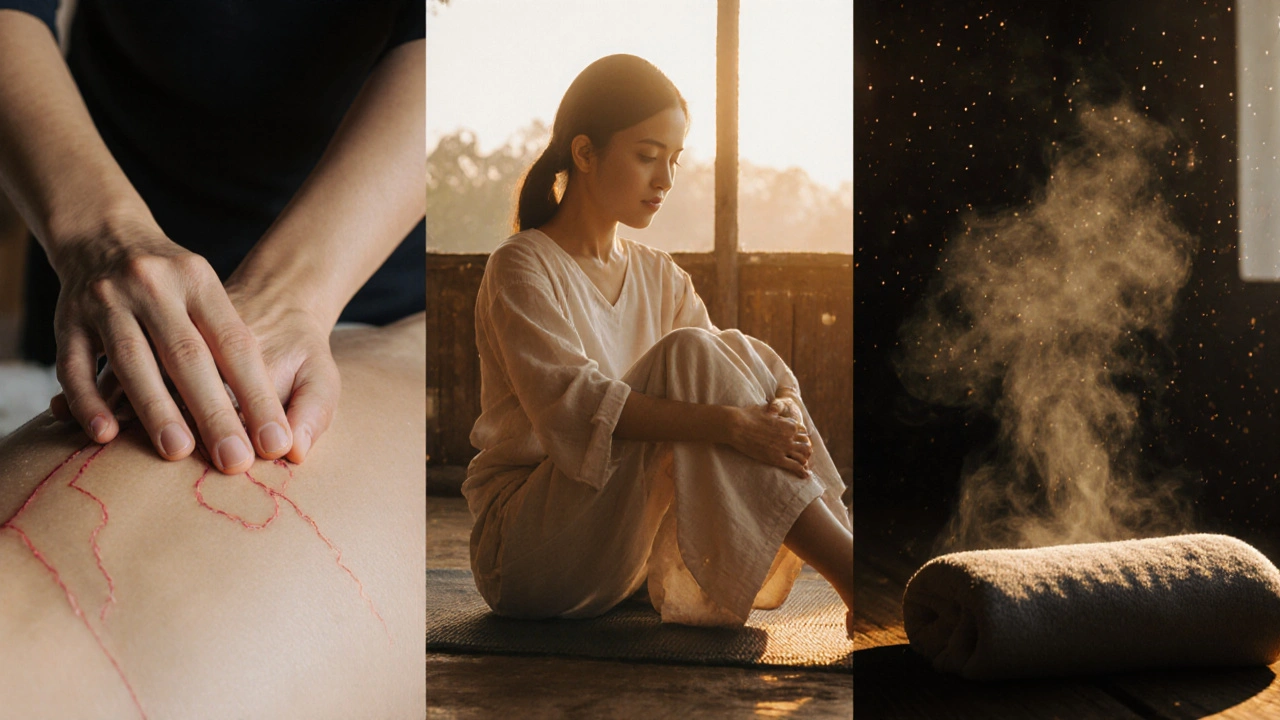Laos Massage: A Wellness Trend Worth Trying
 Nov, 18 2025
Nov, 18 2025
Most people know about Thai massage. You’ve seen the photos: stretched limbs, deep pressure, yoga-like moves. But if you’ve ever traveled through Laos-or heard whispers from backpackers returning from Luang Prabang-you know there’s something quieter, deeper, and just as powerful called Laos massage. It’s not flashy. It doesn’t scream for attention. But once you feel it, you won’t forget it.
What Makes Laos Massage Different?
Laos massage isn’t just Thai massage with a different name. It’s its own thing. Rooted in ancient Lao healing traditions, it blends elements of traditional Chinese medicine, Ayurveda, and indigenous Southeast Asian bodywork. Unlike Thai massage, which often uses the therapist’s elbows and feet for deep compression, Laos massage relies on hands, thumbs, and gentle stretching. The pressure is firm but never bruising. It’s more about rhythm than force.
Practitioners in Laos don’t just work on muscles. They work on energy lines-called sen lines-that run through the body. There are 10 main sen lines, similar to Thai massage, but Lao therapists focus on fewer, deeper pathways. You’ll feel your shoulders release not because someone is pressing hard, but because they’re tracing a line from your wrist to your collarbone with slow, deliberate strokes. It’s meditative-for both the giver and the receiver.
A Session Feels Like a Slow Breath
Most sessions last 60 to 90 minutes. You lie on a low mat on the floor, fully clothed in loose cotton. No oils. No music. Just the sound of breathing and maybe distant temple bells. The therapist starts at your feet, then moves up your legs, back, arms, and neck. Each movement flows into the next like water.
One key difference from Thai massage: Laos massage rarely includes joint cracking or extreme stretches. You won’t be pulled into a full pigeon pose. Instead, you’ll feel gentle rocking motions, circular kneading around the hips, and long, gliding strokes along the spine. It’s designed to calm the nervous system, not challenge your flexibility.
Many Lao therapists use herbal compresses-small cloth bags filled with lemongrass, turmeric, ginger, and tamarind leaves. These are warmed over steam and pressed into tight spots. The heat and scent sink into your skin. It’s not just aromatherapy. The herbs have anti-inflammatory properties. People in rural Laos have used them for generations to ease arthritis, muscle pain, and postpartum recovery.
Why It’s Gaining Popularity Outside Laos
In the last five years, wellness centers in Sydney, Berlin, and Portland have started offering Laos massage. Why now? Because people are tired of aggressive treatments. They’re looking for something that doesn’t leave them sore for days. Laos massage doesn’t promise instant results. But after three sessions, clients report better sleep, less anxiety, and a noticeable drop in chronic neck and lower back pain.
A 2023 study from Chiang Mai University tracked 120 participants who received weekly Laos massage for eight weeks. Over 78% reported improved mobility in stiff joints. 82% said their stress levels dropped noticeably. No pills. No machines. Just hands, heat, and time.
It’s also becoming popular among athletes and office workers. Not because it’s a quick fix, but because it’s sustainable. You can do it monthly. You don’t need to be flexible. You don’t need to be young. It works whether you’re 22 or 72.

How to Spot an Authentic Laos Massage
Not every place calling itself “Laos massage” is genuine. Here’s what to look for:
- No oils or lotions-authentic Laos massage is done with dry hands over clothing.
- Herbal compresses-if they’re not used, it’s probably a hybrid version.
- Low tables or mats-not massage beds. You’re meant to be grounded, not elevated.
- Therapists who speak softly-they don’t chat much. Silence is part of the therapy.
- Price point-in Laos, a session costs $5-$10. Outside the country, $60-$90 is fair. Anything under $40 is likely diluted.
Watch for therapists who use their palms more than their knuckles. Avoid places that promise “deep tissue” or “detox”-those are red flags. Laos massage isn’t about breaking down knots. It’s about inviting them to soften.
Who Should Try It?
Laos massage is ideal for:
- People with chronic tension in the neck, shoulders, or lower back
- Those recovering from injury but not ready for aggressive physiotherapy
- Anyone feeling mentally drained or emotionally overloaded
- Travelers who want to connect with local culture through touch
- People who dislike being touched with oils or exposed skin
It’s not for you if:
- You want instant pain relief after one session
- You prefer loud music and strong scents
- You’re looking for a sexualized or sensual experience
- You have open wounds, recent fractures, or severe osteoporosis

How to Bring Laos Massage Home
You don’t need to fly to Vientiane to experience its benefits. You can adapt the principles at home.
Try this simple routine after a long day:
- Wear loose clothes and sit or lie down.
- Warm a small towel in the microwave for 20 seconds (or use a rice sock with dried ginger).
- Place it on your lower back for 3 minutes.
- Use your thumbs to trace from your inner wrist up the inside of your forearm to your elbow-slow, steady pressure.
- Repeat on the other side.
- Then, gently rock your knees side to side while lying on your back for 2 minutes.
It won’t replace a professional session. But it’ll help you remember how to slow down.
Where to Find It
If you’re in Sydney, check out Sen Wellness in Newtown or Lao Hands in Marrickville. Both train their therapists in Luang Prabang. In Melbourne, Wat Mai Spa offers authentic sessions with Lao-born therapists. Outside Australia, look for centers affiliated with the Lao Traditional Healing Association.
When booking, ask: “Do you use herbal compresses? Is the massage done with clothes on?” If they hesitate, keep looking.
It’s Not Just a Massage. It’s a Practice.
Laos massage isn’t about getting a treat. It’s about reconnecting. In a culture where time moves slowly and healing isn’t rushed, this practice reminds you that your body doesn’t need fixing-it needs listening.
After your first session, you might not feel like you’ve been “fixed.” But you’ll notice something else: you breathe deeper. Your shoulders stay down. You don’t reach for your phone as often. That’s the real effect.
Laos massage doesn’t promise miracles. But if you’re looking for a way to come back to yourself-without noise, without hype, without chemicals-it might be exactly what you’ve been missing.
Is Laos massage the same as Thai massage?
No. While they share roots, Laos massage uses less force, avoids extreme stretching, and doesn’t rely on oils. Thai massage often uses elbows and feet for deep pressure and includes joint mobilization. Laos massage focuses on gentle, rhythmic strokes along energy lines, often using herbal compresses and is done with clothes on.
Does Laos massage hurt?
It shouldn’t. The pressure is firm but never sharp or bruising. If you feel pain, speak up. Authentic Laos massage works with your body’s rhythm, not against it. Discomfort means you’re resisting; the goal is to invite relaxation.
How often should I get a Laos massage?
Once a month is ideal for maintenance. If you’re dealing with chronic tension or stress, weekly sessions for 4-6 weeks can create lasting change. After that, monthly is enough to keep your nervous system balanced.
Can I do Laos massage on myself?
You can’t replicate a full session alone, but you can borrow the principles. Use warm herbal compresses, trace slow strokes along your arms and legs, and practice deep breathing during the process. Even five minutes a day helps retrain your body to relax.
Are herbal compresses necessary?
They’re not mandatory, but they’re a key part of traditional Laos massage. The heat and herbs-like lemongrass and turmeric-reduce inflammation and deepen relaxation. Without them, you’re getting a simplified version. Ask if they’re included before booking.
Is Laos massage safe during pregnancy?
Yes, if done gently and with a therapist trained in prenatal bodywork. Avoid deep pressure on the abdomen and lower back. Herbal compresses should be lukewarm, not hot. Always inform your therapist you’re pregnant before starting.
